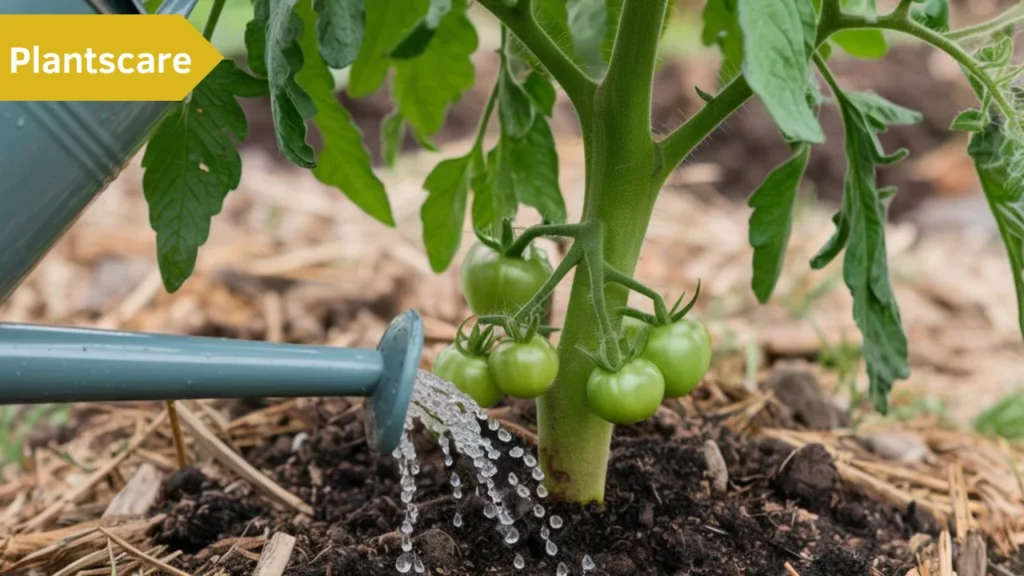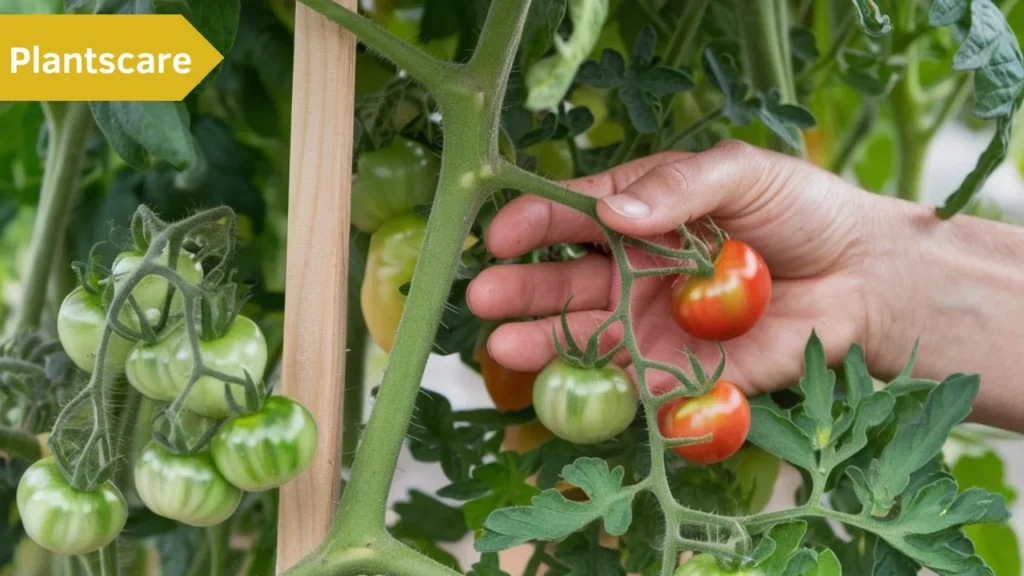Growing tomatoes is not just about planting seeds and waiting for the magic. It requires knowledge, care, and the right environment to ensure ” What is good for tomatoes? ” Tomatoes are sensitive to their surroundings, and slight changes in soil, water, or light can drastically affect the outcome. This guide is designed to give you all the necessary information to grow the healthiest tomatoes possible.
2. Choosing the right variety
When starting out, the first decision you’ll make is selecting the type of tomato to grow. There are two main types:
Determinate tomatoes
Determinate tomatoes grow to a certain height, set their fruit all at once, and then stop growing. These are great if you’re looking to harvest your tomatoes in one go.
Indeterminate tomatoes
Indeterminate varieties keep growing, setting fruit throughout the season. They are ideal for gardeners who want a continuous harvest over the summer.
Consider your climate, available space, and how often you’d like to harvest when choosing your variety.
3. Ideal soil for tomatoes
Rich in organic content and well-drained, the soil is ideal for tomato growth. These are the main ideas to remember:
Soil composition and pH levels
The soil should be loamy and well-aerated with a pH level between 6.0 and 6.8. Test your soil before planting and amend it with lime to raise the pH or sulfur to lower it if needed.
Adding organic matter
Incorporating compost, well-rotted manure, or organic fertilizers into the soil provides essential nutrients and improves soil structure. This helps retain moisture while ensuring good drainage.
4. Sunlight requirements
Tomatoes require six to eight hours a day of direct sunlight. The more sun your plants receive, the better they’ll photosynthesize, leading to healthier growth and tastier tomatoes.
Maximizing sunlight exposure
If you’re in a cooler climate, try planting tomatoes near a wall or fence that reflects sunlight to boost their exposure. In hotter regions, providing shade during the hottest part of the day can help prevent sunscald.
5. Proper watering techniques
How much water do tomatoes need?
Tomato plants need consistent watering. The soil should be kept moist, but not waterlogged. On average, tomatoes require about 1-1.5 inches of water per week, depending on weather conditions.
Overwatering vs. underwatering
Overwatering can lead to root rot and fungal diseases, while underwatering can cause fruit cracking or blossom end rot. To strike the right balance, water deeply at the base of the plant and avoid overhead watering.

6. Fertilizing your tomatoes
Best fertilizers for tomatoes
Tomatoes benefit from balanced fertilizers, typically with higher phosphorus content (NPK ratio like 5-10-5). Phosphorus promotes root development and helps with flowering and fruiting.
Fertilizing schedule
Start with a good organic fertilizer when planting, and continue feeding every 2-4 weeks during the growing season. Stop fertilizing once the plants begin to bear fruit to avoid excessive foliage growth at the expense of fruit production.
7. Supporting your tomato plants
Tomatoes, especially indeterminate varieties, require support to prevent them from sprawling on the ground.
Staking
A simple stake can keep your plants upright and prevent diseases caused by soil contact. Place the stake at the time of planting to avoid disturbing the roots later.
Caging
Cages provide more support for heavier plants and allow the vines to grow naturally. This method requires less maintenance than staking.
Trellising
Trellising is a great option for indeterminate varieties that grow tall. It allows for better air circulation and makes harvesting easier.
8. Pruning and training tomatoes
When and how to prune
Pruning helps the plant focus its energy on fruit production rather than excessive foliage. Remove the “suckers” — small shoots that appear between the main stem and branches — to encourage more fruit.
Benefits of removing suckers
Pruning improves airflow, reduces the risk of disease, and directs nutrients to the main branches, resulting in larger, healthier fruits.
9. Mulching around tomato plants
Types of mulch
Organic mulches such as straw, grass clippings, or shredded leaves help retain soil moisture, regulate soil temperature, and suppress weeds.
Benefits of mulching
Mulching prevents soil-borne diseases from splashing onto the plants and conserves water by reducing evaporation.

10. Controlling pests and diseases
Common pests and diseases
Tomatoes are prone to pests like aphids, hornworms, and whiteflies, as well as diseases like blight and wilt.
Organic pest control methods
Use natural predators like ladybugs for aphids, handpick hornworms, and practice crop rotation to minimize disease.
11. Companion planting with tomatoes
Plants that benefit tomatoes
Basil, marigold, and garlic are excellent companions for tomatoes as they help repel pests and improve growth.
Plants to avoid
Avoid planting tomatoes near corn or potatoes, as they can share pests and diseases that harm your tomatoes.
12. Harvesting tomatoes
When to harvest
Tomatoes are ready to pick when they turn fully red (or yellow, purple, depending on the variety) and are firm but slightly soft to the touch.
Extending the harvest season
Pick tomatoes regularly to encourage the plant to set more fruit, and consider growing late-season varieties for an extended harvest.
13. Storing and using tomatoes
How to store ripe tomatoes
Store tomatoes at room temperature until fully ripe. Once ripe, they can be kept in the refrigerator, though this can slightly affect their flavor.
Creative ways to use tomatoes
Tomatoes are incredibly versatile. Use them in fresh salads, sauces, salsas, or can them for future use.
14. Troubleshooting common problems
Blossom end rot
This is caused by a calcium deficiency and inconsistent watering. Adding calcium to the soil and maintaining consistent moisture can help prevent it.
Cracking and splitting
Cracking often happens when tomatoes receive too much water after a dry period. Water regularly and mulch to retain moisture.
15. Conclusion
Tomatoes are rewarding but challenging to grow. With the right care proper watering, sunlight, fertilization, and disease control — you’ll be able to enjoy a bountiful harvest of fresh, juicy tomatoes. Happy gardening!
FAQs
How often should I water my tomatoes?
Water them deeply once or twice a week, adjusting based on rainfall and temperature.
What is the best fertilizer for tomatoes?
A balanced fertilizer with a higher phosphorus content, such as 5-10-5, is ideal for tomatoes.
How can I prevent tomato diseases?
Good airflow, crop rotation, organic pesticides, and proper pruning can prevent most common diseases.
Can I grow tomatoes in containers?
Yes, tomatoes grow well in containers if they have at least 5 gallons of space and receive full sunlight.
What is the duration required for tomatoes to grow?
It usually takes 60-100 days from planting to harvest, depending on the variety.